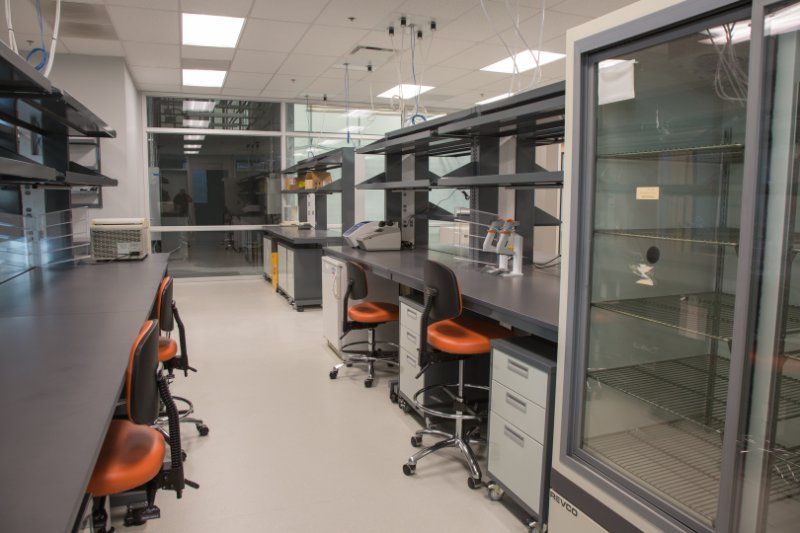
OnePointe Solutions builds custom scientific furniture for research facilities across the united states.
The U.S. population is desperately in need of more food, and yet, we’re still inexplicably a culture of picky-eaters. Time for your local food lab to make things happen.
“Make it more natural!”
“Make it stay fresh longer!”
“Make it stay fresh longer… but in a natural way!”
“Also better tasting!”
“But use less of all the unhealthy stuff that tastes good!”
“Do all of that! We’ll be back for more later today!”
Want to make matters even more difficult for traditional food producers than just a picky palate? Add to the fact that a growing population means more mouths to feed than ever, that global warming’s after-effects will no doubt create a recipe for social unrest, and you’ve got real and pressing demands.
These are the kind of problems that require solutions that can’t be created on a farm or in a factory. In a sense, now more than ever, success at both the industrial and humanitarian level is about climbing up the food chain and cleaning up the farm.
Gone are the days where farmers can leach the earth of its bounty. As arable land becomes more and more scarce, societies can no longer rely on millions of methane-producing livestock to meet their needs.
Thankfully, a solution is set on the horizon. There is a future of food, and it’s healthy, flavorful, and — most of all — sustainable.
Now, food is being created in laboratories across the United States. The bellwether of this new market, food additives, is set to grow by $39.8 billion in the next three years, with natural additives being the fastest growing sector.
Additives, such as emulsifiers like those utilized to increase a food product’s shelf-life, are also growing rapidly in demand. The science isn’t complicated. In short, the longer food lasts, the less we have to produce.
So, in terms of practicality, deliverability, and profitability, qualities like a longer shelf-life are a no-brainer for food products. But when the market demands a higher quality of taste and health in their food along with both its demand and a manufacturer’s need to ensure a longer period of freshness, things get tricky, and manufacturers have to get creative.
The thing is, those creative solutions are on the way. And there needs to be a space for it.
Finding innovative food solutions to seemingly counterintuitive demands requires, among a litany of other things, a lab space that’s built and completely optimized to find those solutions. Without a laboratory and lab equipment built to your specifications, time gets lost figuring out solutions on how to work in that space rather than figuring out the solutions to the problems you’ve been asked to solve.
Every food manufacturer in the world is aware of the food and food additive market’s demands. The most successful companies will be the ones who find the most creative ways to expedite and maximize the output of their solutions.
If you want to give yourself the best chance to do that — that is, the best chance to succeed — providing your engineers with the tools they need to create more efficiently and at a higher level is arguably the first step toward reaching that goal. In the end, don’t let their methods be tainted by their medium.
A proper, safe, efficiently designed lab can mean all the difference in achieving those all-important breakthroughs. If you are building a food testing laboratory, we can help you start the process.


